 J. MacGuire in clearly one of the finest soliloquies of our time. J. MacGuire in clearly one of the finest soliloquies of our time. That blur that just went by was January. Does 2024 feel any different than 2023 for your #BoardGoals? Even a hint? If the energy just isn't there, you need a fresh approach to summon it -- before you blink and it's August. The almost universal commentary that I hear about my clients' boards sounds like: "Honestly, it's stuck in 2nd gear and I don't know what we need to get us really moving. It's frustrating." The answer isn't another group strategy you announce at a meeting and nearly everyone lets slide through spring. It's individual-level planning and accountability. Like the pleas of Jerry MacGuire, help them help you. Did you know that individual Board member action plans are a thing? Here's the cheat code: 1. You share a 3-page checklist of gloriously useful Board-level tasks and ideas with each member -- which you can customize for your org. Available on this site for the price of a lunch out. 2. They privately mull over their capacity, time, and highest needs of your nonprofit looking an entire 12 months ahead. 3. They decide what they can do and when, document it in their plan, and share it with you. 4. Voila. Clarity for all parties. Meet with those who want to talk things over. Welcome their new ideas and margin notes. These are eminently fruitful conversations in my experience. And because each Board member planned specific, timed actions themselves -- these things tend to get DONE! Then make it an annual ritual.
1 Comment
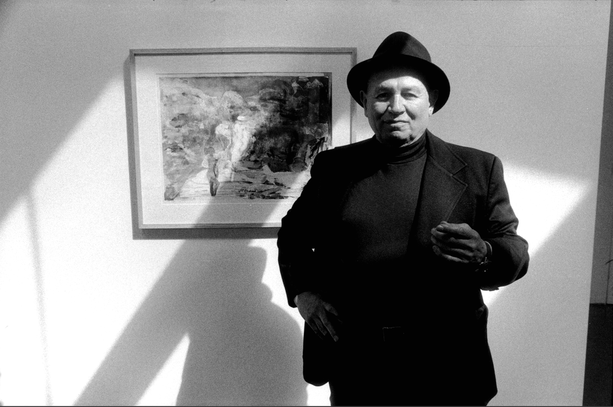 September 2nd marked Romare Bearden's 112th birthday, and the Romare Bearden Foundation extends his legacy by paying it forward to uplift and support BIPOC artists in America. It's a lifelong honor work with some of the best minds in US arts and culture for 25 years and counting -- but working for the Bearden Foundation feels like a special honor and highlight. Romare Bearden should be household name like Andy Warhol, known well beyond the art world. He was a Black artist who broke barriers in American art during his lifetime and embodied everything we mean by "Renaissance man." Collagist. Painter. Printmaker. Jazz collaborator. Composer. Record producer. Social worker. Civil Rights activist. Poet. Accomplished athlete. Time magazine cover artist. Studio Museum of Harlem co-founder. Philosophy scholar. Muralist. Public art curator. Arts educator. The list rolls on and on. ALSO...Camara Holloway will present the webinar series Race Matters: Cultural Politics in the 1960s. The series presents new insights into the work of Bearden and his contemporaries, and includes scholars Bridget Cooks, Helen Hsu and others, presenting on Bearden, Robert Rausenberg and other artists working in the 60s. Thursday Sept 7 at 1:00 EST Thursday Sept 14 at 1:00 EST Thursday Sept 21 at 1:00 EST Thursday Sept 28 at 1:00 EST Register for the series here: https://lnkd.in/g6KFtke8  Hello, 80s? I'd like to order some data for my Annual Fund. Hello, 80s? I'd like to order some data for my Annual Fund. Earlier this year, I offered two free mini-courses on prospect research tools to friends and colleagues in NM and Chicago. Thirty minutes. Tell me your data hopes and dreams, and I'll share a couple time-saving hacks that I developed to cut through a list of 1,500 names (times 30 data points = 45,000 things too dang many). The differences in attitude about this topic shocked me -- despite the fact that they had the same ballpark budget size for their organizations: My Chicago contingent: "We wealth screen annually for our Annual Fund base and set their ratings accordingly. We do it a few times over a special campaign. We upload the data to our database so it's in the donor record and we can reference it throughout the year as needed." Those are A-student answers, my friends. Those answers optimize fundraising year over year on repeat. My New Mexico contingent: "We don't use it because we don't actually trust it... Where does it all come from? It can't be right -- can it?" GASP. WHEEZE. Where do I begin? Here's the thing: We've been living in the Information Age since Alex P. Keaton carried a briefcase to high school. Email fundraising wasn't a thing until the mid-90s, but can you even imagine fundraising without it now? Without social media asks or texting? Data is BIGGER than those things combined! It's far more fundamental. It drives the underlying structure and rationale of your development program asks. It's the info to prioritize your time on relationship building. It's about understanding your donors beyond what you can gather from a couple of conversations a year and observing their taste in handbags. The results speak for themselves -- and it doesn't even have to be expensive to access when there are resources like me to run and analyze a list for you. A few days after the mini-courses, the Santa Fe Community Foundation serendipitously reached out and said, "If you could teach anything in northern NM this year, what would it be?" Welcome to my one-day virtual course, A Prospect Research Road Map for Beginners -- scheduled for Thursday, November 2nd. Let's do this, NM! Next week, Chicago will open an immersive theater production unlike anything it's ever seen, and I'm over the moon to have helped the creators make it possible.
Port of Entry is the big, bold, audacious idea actualized by the brilliant minds and hearts of Albany Park teens, Albany Park Theater Project (APTP) leadership, and Third Rail Projects of Brooklyn. Their mission: Invite thousands of people to step inside the real-life stories of immigrants and refugees from all over the world -- replicated in a 1929 warehouse made to look and feel exactly like a real Albany Park apartment building. And then run the show for at least a year (!). As if that isn't big enough, APTP teens are the heroes of the story writ large. It's their first-hand immigration stories that drive the play, they are the actual actors, and the entire experience from early development to closing week will help launch them into college. APTP has been doing this kind of deep youth development with exceptional care for decades -- with stunning success. Introduced through a mutual friend, APTP's co-Executive Director David Feiner reached out in 2019. "We need to raise possibly as much as $3 million. We have $700,000 in grants so far... Is that good?" I assured him that raising $700,000 is indeed almost always very good. What they didn't have was a building site or any track record of real major gift campaign work. We spent the next three years working together on the feasibility study, securing the donation of the warehouse, honing the remaining $2.5 million funding plan, and tackling it month by month. In spite of the pandemic, everything rolled on thanks to Zoom, extraordinary donors who were willing to listen, and a truckload of trademark Chicago hustle and grit. Port of Entry is a turning point for APTP -- they intend to work big from now on. So far it's working, as the summer block of performances is already sold out. I can't wait to make a trip back to see it this fall. There is nothing in this world like the feeling of big, beautiful vision realized. 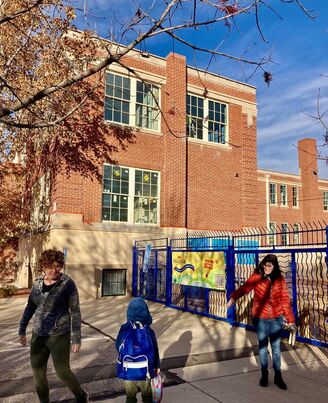 Rear section of Harwood Art Center windows overlooking Escuela del Sol Montessori courtyard. Rear section of Harwood Art Center windows overlooking Escuela del Sol Montessori courtyard. The Harwood Art Center building is so rare in NM, historic preservation experts look outside the state for comparable structures. Originally built for the Harwood Girls School in 1925, the building sat neglected before Escuela del Sol Montessori took over the campus in the 90s. Operating mostly out of the campus' large WPA adobe, the school decided to convert Harwood's former dorm rooms into artist studios. An irreplaceable cultural gem was born. When I first began working with Escuela and Harwood's team, I asked, "If money were no issue, what would you do first?" The answer was a draw between green sustainability and the urgency of historic preservation: "We're Escuela del SOL. We want to be solar and Harwood's roof is perfect!... But also we're really worried about the windows. " Those gorgeous windows were showing their 95+ years, making some studios feel way too al fresco. In some cases, the panes were literally falling out. In 2021, the first dream came true when a local solar company with Escuela ties committed the huge in-kind gift of an array on Harwood's newly replaced roof. The array now generates all of the campus electricity! A year later, the window project -- a massive effort involving historic preservation architects and 200 custom-designed windows -- is possible in part thanks to the support of a major donor. Installation began this fall and (we hope!) will be done before we ring in 2023. 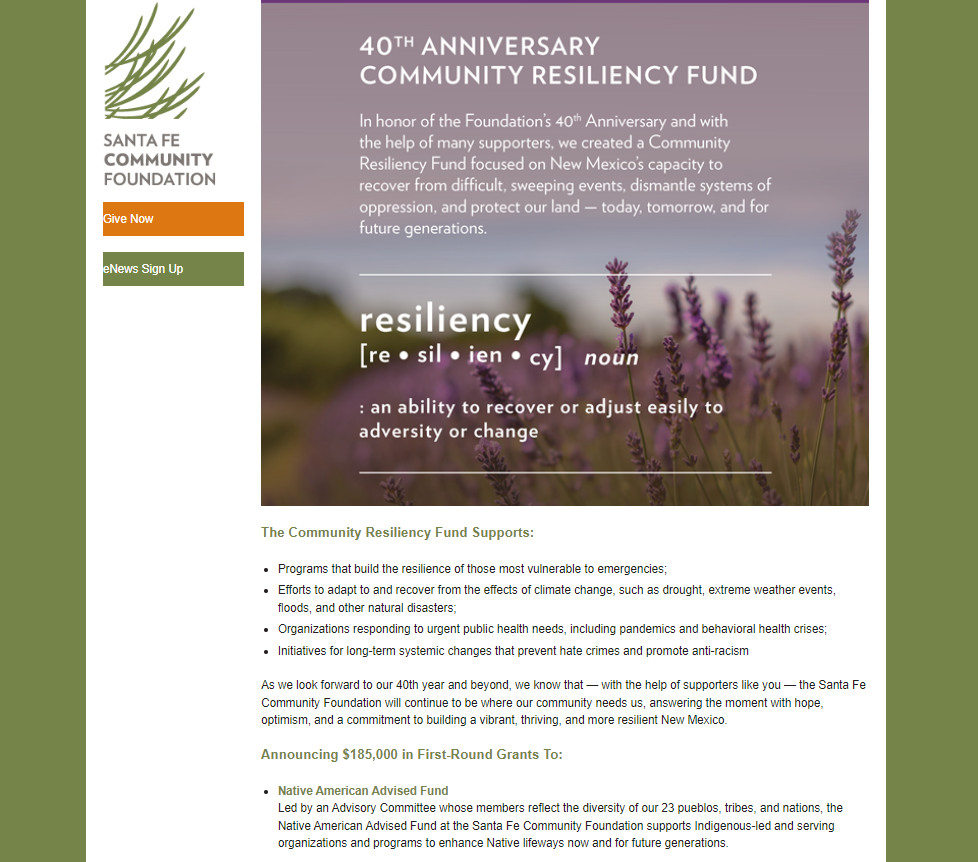 When the Santa Fe Community Foundation engaged my services last year to help design their 40th anniversary campaign, we thought hard about what New Mexico needs most. SFCF generously spreads their giving statewide rather than just regionally -- something that became almost essential during the terrible, sweeping fallout of COVID.
We hoped to strike a tricky balance -- focused enough to inspire donors to give, yet flexible enough to accommodate health care, food insecurity, climate and environmental crises, racist policies, and even unknown threats. We landed on the idea of the emergency. It's what all of these areas shared in common -- a moment in time when one big problem sweeps the state and cascades out several more. Resiliency is the antidote, SFCF's interim president Sue Coliton wisely pointed out. The Resiliency Fund was born. While I'm not surprised that the emergency we're seeing in our home state today -- fires in northern and southern NM simultaneously due to stunning wind -- is climate related, I'm proud that we created a fund that can indeed help our communities respond to the moment. You can support the Resiliency Fund directly here. 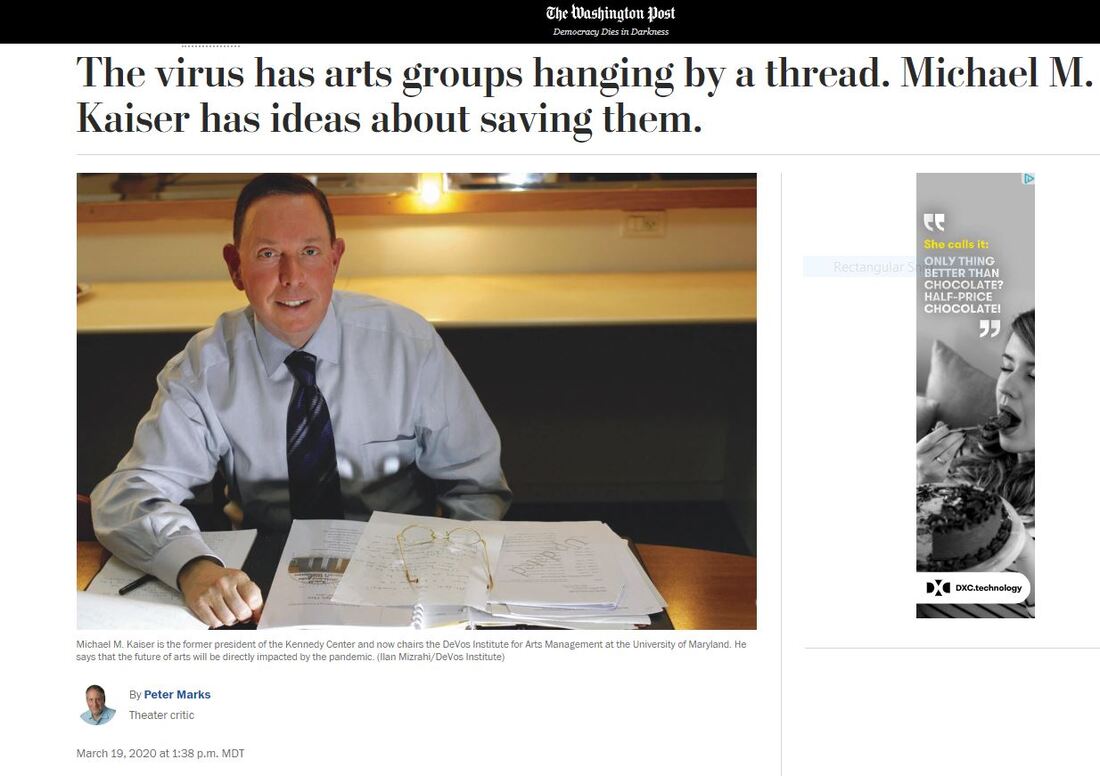 Like a lot of people, I'm concerned about the capacity of our mid-sized arts organizations especially to weather the COVID-19 crisis. Last Wednesday I offered a free call session to NM arts nonprofits who want to talk through their response strategies for their annual funds, event cancellations, moving to digital engagement, big campaign planning questions, board response, and how to talk with donors right now. I intend to do that twice a month as long as it's useful. This thing is evolving so fast, anyone saying they have all the answers isn't being honest. But I've started guiding several of my clients in New Mexico and Chicago through it, and I think there are a handful of tools that are critical to employ right now to weather this and the expected recession. I also think some organizations might come out of this stronger, with a few incredibly valuable new tricks they wouldn't have otherwise figured out. It's true that every crisis presents opportunities. I've set up a video call at noon, two Wednesdays per month to take questions and share key advice for fundraising in a pandemic. It's limited to 13 callers. No charge. Arts Fundraising in a Pandemic Next calls: Wednesday, April 8th and 22nd 12:00 PM to 01:00 PM US/Mountain (60 min) zoom.us/j/707429172 Concern #1: Donors might shift their focus to health-related projects.
Your Best Response: Your donor communications should explain how your organization is responding to the situation. Include details about what you’re doing to help protect the well-being of stakeholders at your organization that your donors care most about.
Your Best Response: State upfront that your organization puts your community’s health and well-being first. Then make the appeal that support now is more important than ever to ensure your organization is in a strong place when this lifts to get back to creating joy and great art. Think about ways you might use digital events to engage your donors. A performance might not make sense, but what about a conversation with your artistic staff about how a project is developing? Could you do a virtual script reading? Concern #3: Corporate giving is the first to contract in a down market. Corporate donors should be a low priority now for solicitations. Put the top priority on family foundations and individuals. They’re most likely to take the long view on the markets and have some cushion. Reach out to the business partners and sponsors who you have very close, long-running relationships with. Otherwise, most corporate/business contacts will need time to see how they're impacted. Concern #4: Older donors are totally self-isolated. For major gift plans long in the works with individual donors, ask for the meeting when your campaign is ready, but start out by asking how they're doing first and listen. It's possible they might be willing to do a video call for a request if you've cultivated them well and recently -- and if they signaled that they were ready in the past several weeks to be asked for a big project. Be prepared if they say they need to wait a month or two for the meeting and be diligent about follow-ups. Isolation means many major donors likely welcome your update call or email. Everyone is answering their phones right now. Reach out to your top priorities to keep the relationship warm and keep them updated on how you're managing through this. Concern #5: It’s uncertain how long this will affect daily life. Develop contingency plans for the efforts that really matter. Your board should have an emergency meeting if it hasn't already to plan 2-3 different scenarios. One of those should anticipate a six-month recession. How much capital do you have to get through the next months without new revenue? What can you do to stretch what you do have? Can you create new revenue streams with digital content? Are there any major restricted grants or gifts that you can talk to the donors about, asking them to loosen restrictions right now? How much would your fundraising team need to raise exactly to fill the gaps? By when? What if the fall appeal is impacted? They can't fundraise without goals and a clear picture. Larger donors will want to know. Remember that since 1980, the US has been through five official recessions. Donors have continued to give through all of them, but with more focus on the organizations that earn their love and trust. We still saw growth in giving over those periods – but it was slower. Concern #6: We don’t know where to cut the operating budget if we need to. The last place to cut is where you’re still generating revenue. A strong fundraising effort needs to stay in place no matter what. Meet with your board, make sure they understand that their focus and collaboration are critical to help keep your fundraising programs strong to weather this. Can they call lapsed donors at the higher levels and ask for a renewal? Can they assist in nudging donors thinking about bigger requests? This is the time to make sure that the organization's leaders pull together.  Two checks are better than one. Two checks are better than one. Did you know that 20% of individual donations could be matched by employer companies? That adds up to a LOT of money left on the table every year. Why? Most donors aren’t even aware their (or their spouse’s!) employer matches gifts, or they forget about it when they donate, or they aren’t sure how to request it. Few companies push the benefit, meaning it often goes untapped. The frequent users tend to be top executives. That’s why it’s so important for your donation forms to ask for the names of your donors’ employers. Not just a box to check. We love our local businesses in NM, but only a handful have these programs. This is where big companies from out of town are an asset – many have them and they’re surprisingly generous. Here’s the process: My husband works for a company that matches 100% up to $2,000. I make a gift to a local shelter for $2,000. I fill out a company form detailing that gift, and my husband emails it to his internal contact. Then they cut a check for an additional $2,000, including our names, and send it right to the shelter. The shelter credits us for the full $4,000. Ta da! A few matching gift companies operating in the Albuquerque area: Intel – will double a gift by matching it 100% up to $10,000 for all employees, full-time, part-time, or retired. Not bad! Bank of America – matches 100% up to $5,000 for full-time, part-time, or retired. Quest Diagnostics – 100% up to $5,000 for full-time employees. Progressive – 100% up to $3,000 for all current employees. HP – 100% up to $2,500 for all current employees. Wells Fargo – 100% up to $2,000 for all current employees PNM – matches 100% up to $1,000 for all current and retired employees. CBRE – 50% match with no limit for all current and retired employees. There are hundreds more in NM. Update your donor forms to ask for company names and follow-up with the ones who could be matching! At a minimum, take a look at the list of companies where your board members work. Are they all matching where they can? For my New Mexico clients and past trainees, I provide a free look-up service on matching gift companies. If you’re curious about a company that you know a donor works for, reach out, and I can tell you if they have a program, plus the contact info for that employee to request the match. What a great group training on major gifts solicitations in Santa Fe yesterday. For those of you seeking the slide deck, download the attached. Thank you!
|
AuthorEmilie, Principal and Owner Archives
February 2024
Categories
All
|
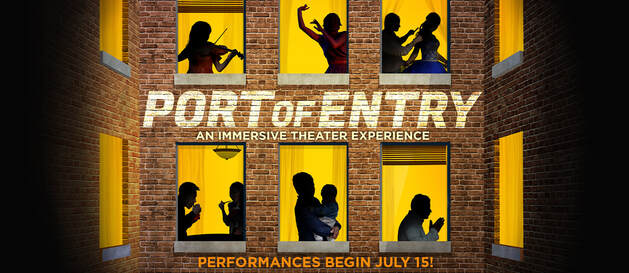


 RSS Feed
RSS Feed